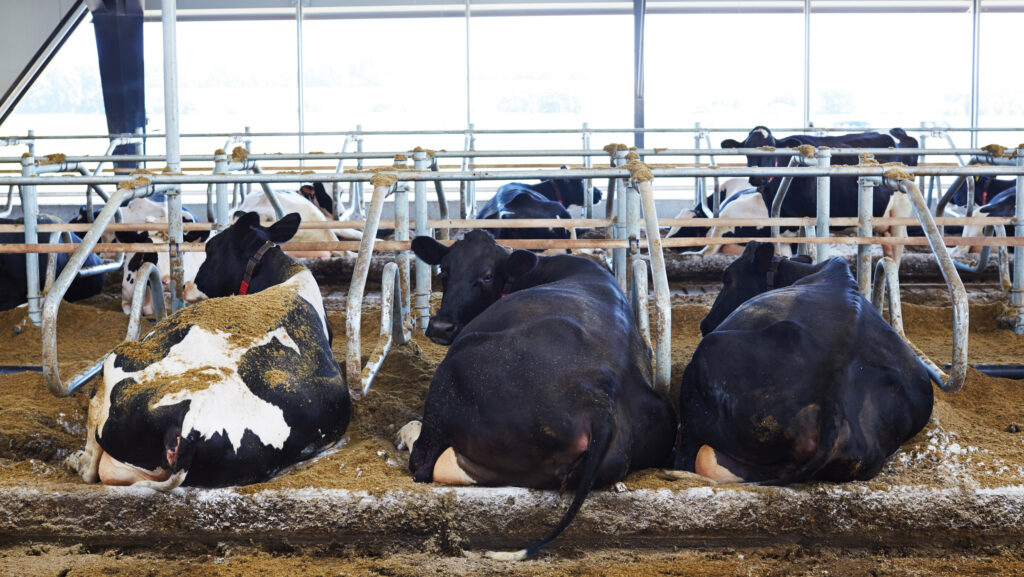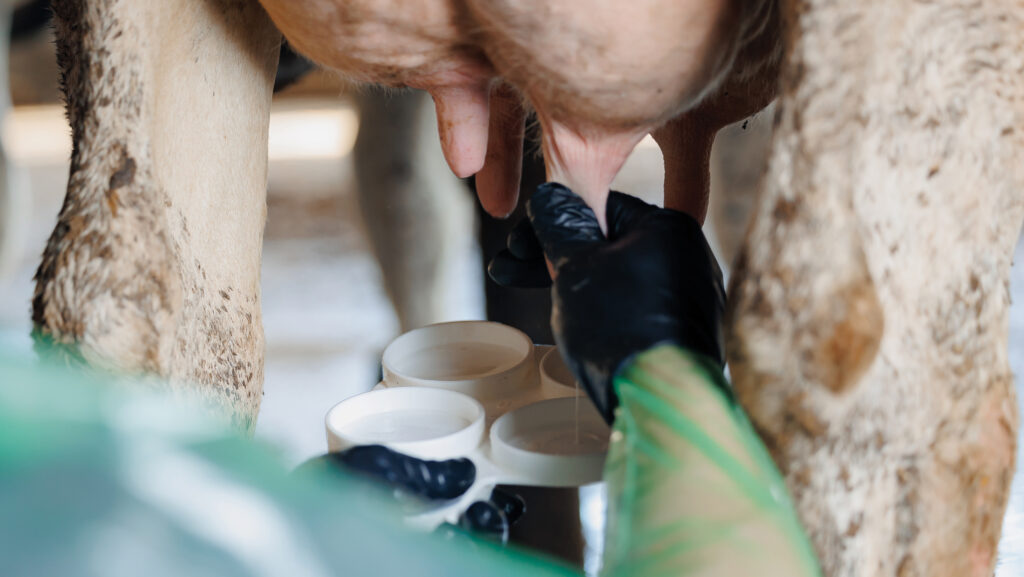Advice on managing transition for better cow fertility
 © Adobe Stock
© Adobe Stock Dairy farmers are losing too many cows to poor fertility, but good management from drying off to submission can prevent those involuntary culls.
Getting the basics right, from cow condition to feed space allocation, will not only set cows up for a trouble-free calving, it will also improve conception rates at first service.
Lee Farrar, of ProStock Vets, says there are multiple factors involved in maintaining health and fertility from drying off to 60 days post-calving.
See also: How hock and neck sores can limit milk yield potential
Measuring success
“There is a lot of effort, time and thought that needs to go into getting everything right,’’ he says.
“A cow transitions from the dry period to calving and is suddenly expected to produce large volumes of milk. If everything isn’t quite right, she will fall behind.’’
A cow will have transitioned successfully if she reaches 30 days in milk without experiencing retained foetal membranes, metritis, a high cell count, milk fever, a displaced abomasum, or any other health problems associated with a fresh calver.
“There are always a few cows on any farm that experience some of these, but most of these issues can be prevented during the transition period, whether they have been caused by diet, condition, or other reasons.
A cow also needs to reach her milk production potential, not simply survive metritis or milk fever,” says Lee.
Lee and fellow vet Aled Bradbourn, also at ProStock Vets, provide expert advice on addressing some of these issues.
Body condition score
Ideally, body condition score (BCS) four times a year – two to three weeks before calving, 60 days later, 100 days before drying off, and at drying off.
The best time to condition score is in late lactation because if they need more feed to gain condition, cows won’t be converting it into producing milk as a fresh calver would.
There is variation between breeds, but for example the ideal BCS for a Holstein Friesian cow at drying off is 2.5-3 – aim to have 90% of the herd within that range.
At this score, the cow will have sufficient condition to maintain her calf and avoid her own health problems.
Big changes in BCS are never good – and any changes should be gradual and done through altering the diet or addressing feed space.
At BCS 4 or above, the cow will mobilise fat after calving and be at risk of ketosis and that will make it harder to get her back in-calf.
Thin cows will not have sufficient body reserves, or achieve milk yield potential, but will be at greater risk of endometritis, delaying conception.
If cows cannot get sufficient dry matter (DM) intakes, the more dominant cows will over-eat and get fat, while the subordinates will get thin.
That is when you end up with some cows at BCS 2 and others at 4.
Be careful not to overfeed, or the calf will get too big and calving will be difficult.
Condition score at calving should be the same as the score at drying off.
Optimum drying off period
Aim for an eight-week dry period, but if a cow is under condition consider drying her off sooner, and shortening it for fatter cows.

© Adobe Stock
Selective dry cow therapy
The standard somatic cell count (SCC) threshold for using selective dry cow therapy (SDCT) is 200,000 cells/ml.
Milk record at least four times a year (although milk recording monthly is the gold standard) to establish which cows to dry off with antibiotic tubes and teat sealant, and which with sealant only.
The most important consideration for SDCT is for the cow to not have had clinical mastitis, or an SCC of above 200,000 cells/ml, in the three months prior to drying off.
A cow that has had either should be dried off with antibiotics and sealant.
Do not rush the drying-off routine – or do it during milking – as you will not give it the time and care it needs.
Bring a group back into the parlour after milking when your mind can be on the job and the parlour is clean. Good hygiene is critical.
Nutrition
A dry cow needs 75cm of feed barrier space compared with 60cm for a lactating cow.
Do not overlook water accessibility. It is as important as feed because if a cow doesn’t drink she won’t eat – allow 10cm for each dry cow.
Monitor nutrition through rumen fill and dung consistency. The “triangle” on the side of the cow is where rumen fill can be established.
Score from 1 to 5, with 5 being the fullest. A dry cow should be 4 or 5; if she looks empty, either the feed is unpalatable, or there is not enough of it.
Dung should be soft but keep its shape in a pat, and be consistent across the herd.
Three weeks before calving, intakes will reduce, so increase energy in the diet – aim for a dietary energy intake of 13-14kg DM/day, of 100-110MJ of metabolisable energy, and 13-14% protein.
Monitoring non-esterified fatty acids (indicative of energy in the ration) will flag up potential problems and allow corrections where needed.
This means the cow will experience fewer problems post-calving.
Pain relief after calving
When a cow calves there is a massive inflammation response and administering an anti-inflammatory makes her more comfortable and more inclined to eat.
If you have had to pull a calf, and it is a tough pull, or if you can see the cow is in discomfort and not bouncing back quickly, pain relief is recommended.
Minimise stress
The calving and post-calving periods are very stressful as cows will be moving groups, and calves may be assisted.
Establish fresh calf groups and make sure each cow has enough shed space.
Allow 1sq m of lying space for every 1,000 litres of milk production, plus one-third on top for eating, drinking and walking around.
Target 16 hours of lying time in every 24 as a measure of comfort. This allows her time to ruminate and digest food to avoid the health issues that will impact fertility.
And aim for more than 85% of cows lying down (as a percentage of the number touching cubicles but not lying down).
If the lying index is less than 85%, consider if cubicles are sufficiently wide or long, whether cows have enough lunge space, and whether bedding is clean and comfortable, to avoid lameness.
A lame cow will not eat, resulting in negative energy balance and not getting back into calf easily.
To minimise stress on heifers, walk them through the parlour in the pre-calving period to prepare them for the milking routine.
Targets
Keeping good records allows vets to analyse incidence rates – without data, reducing levels is less likely.
Ideally, herds would not experience any cases of milk fever or other health issues associated with calving. While that is rarely achieved, there are industry targets:
- Milk fever Below 5%
- Retained foetal membranes Below 5%
- Left displaced abomasum Below 3%
- Mastitis originating in the dry period Less than one case in 12 cows
- Mastitis originating in lactation Less than two cases in 12 cows
- Endometritis Below 10%
